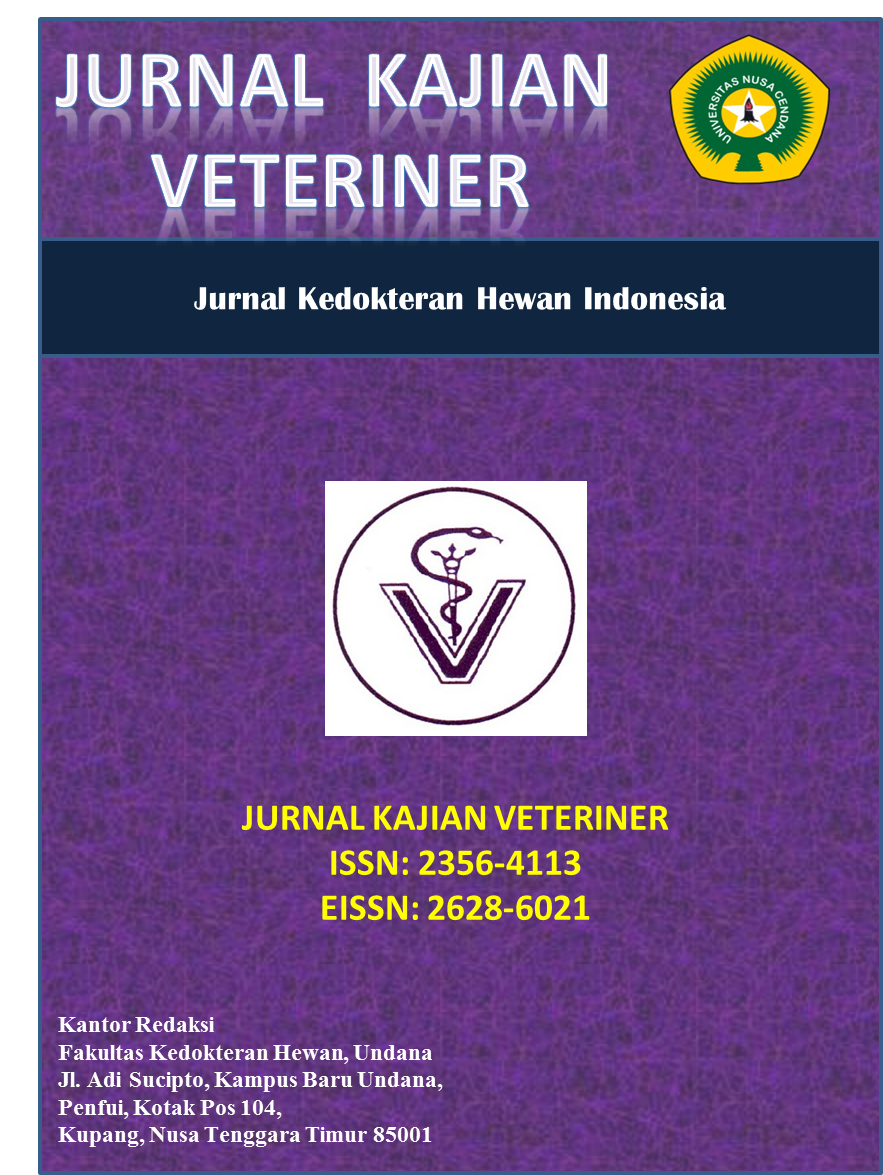Pemeriksaan Kualitas Susu Asal Kedai Susu Kawasan Permukiman Mahasiswa IPB Dramaga dan Cilibende Bogor
Abstract
Milk is an animal food source that plays a role in human life because it contains various nutritional components. Indonesia’s level of milk consumption is still relatively low. As one of an attempt to increase milk consumption, various kinds of processed milk products with a more modish aroma and form were made. However, not all of the quality of the processed milk products sold can be guaranteed. The aim of this study is to determine the quality of milk samples obtained from milk retails located around the students settlement area of IPB University’s Dramaga and Cilibende campus. The total of retails around campus obtained from the survey were 13, so 39 samples were bought. Milk samples taken were plain milk without an addition of sugar, flavor variants or ice cubes. The results obtained by the average value of density, content of fat, protein, lactose, dry matter, non-fat dry matter and pH of milk samples in Dramaga region are 1.0190 g/mL, 2.66%, 2.02%, 3.03%, 8.18%, 5.52% and 6.89. Milk samples in Cilibende region are 1.026 g/mL, 3.80%, 2.75%, 4.13%, 11.34%, 7.54% and 6.54. Based on pasteurization and sterilization perfectness test, it was discovered that all samples were pasteurized milk, even as much as 30.8% were sterilized milk. From this study, it can be concluded that the ready-to-drink milk sold in retails around the students settlements of IPB University has poor quality because it does not meet the minimum standard requirements of SNI No. 01-3951-1995 about Pasteurized Milk.
Downloads
References
Badan Ketahanan Pangan. (2019). Direktori Perkembangan Konsumsi Pangan. Kementrian Pertanian, Jakarta.
Davoodi SH, Shahbazi R, Esmaeili S, Sohrabvandi S, Mortazavian AM, Jazayeri S, Taslimi A. (2016). Health-related aspects of milk proteins. Iranian J Phar Res. 15 (3): 573-591.
Fitriyanto, YA, Triana, Sri U. (2013). Kajian kualitas susu pada awal, puncak dan akhir laktasi. JITP. 1 (1): 299-306.
Harris B, Bachman KC. (2003). Nutritional and Management Factors Affecting Solids-Non-Fat, Acidity and Freezing Point of Milk [Internet]. [diunduh 2019 Desember 23]. Tersedia pada http://edis.ifas.ufl.edu
Lan XY, Wang JQ, Bu DP, Shen JS, Zheng N, Sun P. (2010). Effects of heating temperatures and addition of reconstituted milk on the heat indicators in milk. J Food Sci. 75 (8): C653-C658.
Le TT, Phan TTQ, Camp JV, Dewettinck K. (2015). Milk and dairy polar lipids: occurrence, purification, and nutritional and technological properties. MU Ahmad & X Xu, editor. Polar Lipids: Biology, Chemistry, and Technology. AOCS Press, Illinois.
Murdiati TB, Priadi A, Rachmawati S, Yuningsih. (2004). Susu pasteurisasi dan penerapan HACCP (Hazard Analysis Critical Control Point). JITV. 9 (3): 172-180.
Nian Y, Chen BY, Aikman P, Grandison A, Lewis M. (2012). Naturally occurring variations in milk pH and ionic calcium and their effects on some properties and processing characteristics of milk. Int J Dairy Technol. 65 (4): 490-497.
Nurmayanti. (2016). Komposisi Susu Segar dari Sapi Perah Penderita Mastitis Subklinis di Peternakan Kunak Kabupaten Bogor. [skripsi]. Institut Pertanian Bogor, Bogor.
Rakib MRH, Habib R, Hassan MN, Imam MF, Hassan MN. (2014). Development of turbidity index as field method to detect mixing of heated milk with raw milk. Bang J Anim Sci. 43 (2): 123-127.
Riski P, Purwanto BP, Atabany A. (2016). Produksi dan Kualitas Susu Sapi FH Laktasi yang Diberi Pakan Daun Pelepah Sawit. JIPHTP. 04 (3): 345-349.
Sudarwanto M. (2012). Pemeriksaan Susu dan Produk Olahannya. IPB Press, Bogor.
[SNI] Standar Nasional Indonesia. (1995). Susu Pasteurisasi. Badan Standarisasi Nasional (BSN), Jakarta.
[SNI] Standar Nasional Indonesia. (2011). Susu Segar. Badan Standarisasi Nasional (BSN), Jakarta.
Umar, Razali, Novita A. (2014). Derajat keasaman dan angka reduktase susu sapi pasteurisasi dengan lama penyimpanan yang berbeda. J Med Vet. 8 (1): 43-46.
Van Lieshout GAA, Lambers TT, Bragt MCE, Hettinga KA. (2019). How processing may affect milk protein digestion and overall physiological outcomes: a systematic review. Crit Rev Food Sci Nutr. https://doi.org/10.1080/10408398.2019.1646703
Wandling LR, Sheldon BW, Foegeding PM. (1999). Nisin in milk sensitizes Bacillus spores to heat and prevents recovery of survivors. J Food Prot. 65: 492-498.
Wanniatie V, Hanum Z. (2015). Kualitas susu pasteurisasi komersil. Agripet. 15 (2): 92-97.
Whitehead R. (2018). South East Asian dairy in a churn. Dairy Reporter [Internet]. [diakses pada 2020 Maret 13]. Tersedia pada https://www.dairyreporter.com/Article/2018/10/03/Southeast-Asian-dairy-in-a-churn
Winarno FG. (1993). Pangan, Gizi, Teknologi dan Konsumsi. PT Gramedia Pustaka Utama, Jakarta.
Wulandari Z, Taufik E, Syarif M. (2017). Kajian kualitas produk susu pasteurisasi hasil penerapan rantai pendingin. JIPHTP. 5 (3): 94-100.
Zagorska J, Ciprovica I. (2013). Evaluation of factors affecting freezing point of milk. Int J Biol Biomol Agric Food Biotechnol Eng. 7 (2): 106-111.
Copyright (c) 2020 JURNAL KAJIAN VETERINER

This work is licensed under a Creative Commons Attribution-NonCommercial-NoDerivatives 4.0 International License.

 Maharani -(1*)
Maharani -(1*)








.png)


